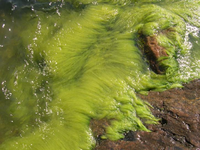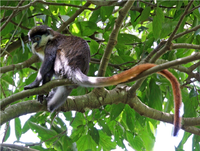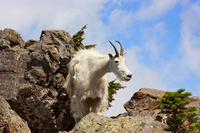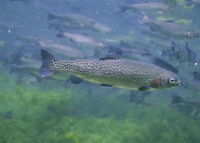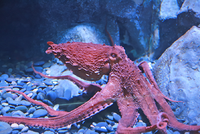Difference between revisions of "Habitat"
| Line 52: | Line 52: | ||
*Arctic '''habitats''' can get warmer in summer and all the ice and snow can melt. | *Arctic '''habitats''' can get warmer in summer and all the ice and snow can melt. | ||
*Grassland '''habitats''' can have a wet season where the flood and a dry season where the animals don't have enough water. | *Grassland '''habitats''' can have a wet season where the flood and a dry season where the animals don't have enough water. | ||
| + | : Most '''habitats''' change temperature and rainfall in different [[Season|seasons]]. | ||
: When a '''habitat''' changes the creatures that live in that '''habitat''' must be able to cope with the change. | : When a '''habitat''' changes the creatures that live in that '''habitat''' must be able to cope with the change. | ||
: If the change is too big or happens to quickly some types of creature may all die. | : If the change is too big or happens to quickly some types of creature may all die. | ||
Revision as of 13:32, 16 August 2018
Contents
Key Stage 1
Meaning
A habitat is the place where a creature lives.
About Habitats
There are lots of different habitats. Some important ones to know are:
Each habitat can have micro-habitats where the creature survives best. Like mushrooms that live on a tree in a forest, woodlice that live underneath a rotting log in the forest or meerkats that live underground in grassland.
Examples
| Polar bears live in an arctic habitat. | The habitat for seaweed is the coast. | Camels live in a desert habitat. | The habitat that monkeys live in is a forest. |
| One type of animal that lives in a grassland habitat is buffalo. | Mountains are an ideal habitat for Mountain Goats and snow leopards. | The best habitat for a trout is a lake or river. | An octopus cannot survive long outside its natural habitat; the sea. |
Key Stage 2
Meaning
A habitat is the type of place where creatures live.
About Habitats
- Habitats can change throughout the year.
- A habitat might not be the same all the time.
- Desert habitats can have a wet season when it rains.
- Arctic habitats can get warmer in summer and all the ice and snow can melt.
- Grassland habitats can have a wet season where the flood and a dry season where the animals don't have enough water.
- Most habitats change temperature and rainfall in different seasons.
- When a habitat changes the creatures that live in that habitat must be able to cope with the change.
- If the change is too big or happens to quickly some types of creature may all die.

